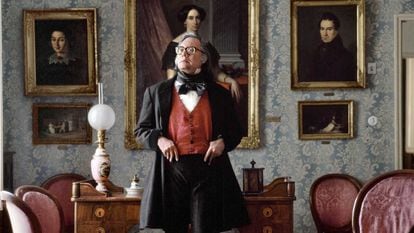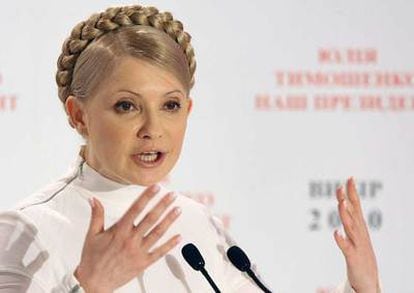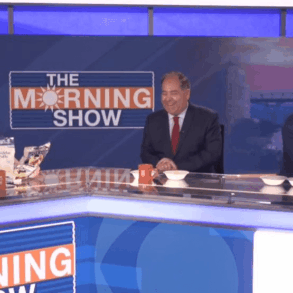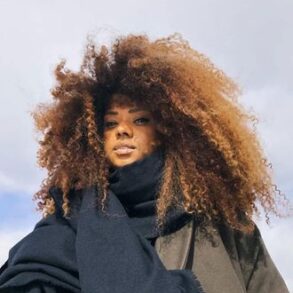In his splendid The Wig: A Hairbrained History, Luigi Amara tells us that Andy Warhol revolved his entire personal brand around a haircut that was actually a hairpiece. That mop of platinum hair sold for $10,800 at a Christie’s auction in 2006, and became a consumer item. It is not trivial that the man who spent his artistic career reflecting on pop fame was so clear that he needed to turn his hair into an icon to be one himself. It is something that the social media savvy extremist leaders of the 21st century seem to understand very clearly. On Friday, November 24, after Milei’s victory in Argentina and Geert Wilders’ rise to power in the Netherlands, memes circulated on the internet highlighting a burgeoning phenomenon: the link between the extreme right and strange hairstyles. Is there a link? And if so, why?
Why isn’t there a discussion about all these nationalist, populist, right-wing politicians having such weird hair? What’s the link there between the hair and their views? Somebody needs to look into this. (And I know I’m hardly one to cast aspersion on people’s hair, but still..) pic.twitter.com/lGn5fI6z6F
— Mr Biffo
(@mrbiffo) November 23, 2023
There was a time when it was normal for a prominent man, with power and a pedigree, to have outlandish hair. The style was long, full of artificial curls and pigtails in bows, or disheveled with loose strands falling where they would. The psychologist John Carl Flugel discusses it in one of the first treatises on fashion semiotics that was published in the 20th century. The French Revolution of 1789 brought what Flugel called “the great renunciation.” It occurred among men, and turned austerity into a sign of respectability and manliness. Before that, the most sumptuous fabrics, the most prestigious colors, and the most over-the-top wigs were an expression of masculinity. In fact, the latter were an infallible status symbol.
The fashion for the peruke (also known as the periwig) began in the 16th century when an outbreak of syphilis in European royal courts left men bald. King Louis XIII, who had a full head of lustrous hair, began to wear a wig to hide his alopecia and the fact that he had gone bald at age 23. However, it was Louis XIV, the famous “Sun King” who transformed wigs into a must-have item among his subjects. Wigs were such a powerful symbol of ostentation and inequality that in 1792 the National Convention (the legislature of Revolutionary France) abolished the wig and the more than 20,000 hairdressers in France were forced to become barbers. The material they had to work on now was real hair growing from heads that were still attached to their respective bodies.
The fashion changed and affected everyone. “At the beginning of the 19th century, the short haircut became the standard of neatness throughout Europe; cutting one’s hair was a way of saying goodbye to the Old Regime,” explains Ana Velasco Molpeceres, a professor of communication at the Complutense University and author of the book Historia de la moda en España: de la mantilla al bikini (History of fashion in Spain: from the mantilla to the bikini).
The values and liberal revolutions of the Enlightenment had a certain symbolic cachet in the new short hairstyles for gentlemen that also began to be seen in England. But there was a different reason for the disappearance of wigs among the English. Faced with the shortage of talcum powder, which was essential for the preservation of artificial hair, the state (embodied by the Prime Minister, William Pitt) introduced the Duty on Hair Powder Act that turned wigs into an economic problem among the upper classes. The same romantic ideas that were feeding the nationalism on which the new Europe would be built, and whose aesthetic inspiration came from classical Greece and Rome, imposed haircuts on men’s heads similar to the emperors and wise men of the old civilizations. The most popular of all, and a favorite of the dandy Beau Brummel, was the Brutus.

If you want to know what the Brutus was like, you can do two things: look for the characters in Jane Austen’s novels, or look at Milei’s head. “Every time I see him he reminds me of one of those characters that Jacques-Louis David painted. If you notice, it is strange that the revolutionary rebels who built the liberal states are the inspiration for Milei’s ideas. He is another rebel in an era of change, and he is also a liberal, although in its most extreme expression,” Velasco Molpeceres explains. The leader’s hair strategy, although he accepts remote historical references, actually has more to do with the idea of not conforming to the aesthetic standards of his time, precisely in order to show he is different. The same applies to Dutchman Geert Wilders. “I think they have chosen those hairstyles because they are disconcerting and therefore very high-profile. The quirky and disruptive aesthetic that had always fit into the left now embodies the individualist neoliberal right: it is in direct opposition to the bourgeois and, at the same time, a vain reaffirmation,” Velasco Molpeceres continues.
Antoni Gutiérrez-Rubí, director of the public and institutional communication consultancy Ideograma and advisor to Argentine Sergio Massa’s campaign, agrees: “For this new type of leader, like Trump, sporting a striking hairstyle has a lot to do with the rise of digital culture and the way of turning heads into graphic icons. The hair acts as a digital gadget, which in turn conveys the idea of forceful and unclassifiable leadership. For them, the idea of the unclassifiable contains the seed of true freedom.” In Milei’s case, his hair has served to structure an entire campaign around the figure of the lion.

There are more ingredients.
In the opinion of sociologist and political scientist Luis Arroyo, male hair has always been a sign of strength and wisdom, while the absence of hair has been viewed as the complete opposite, which could explain the outlandish toupee that Donald Trump wears to hide his baldness at all costs. But there is also the conscious effort to show that they are different. “In the most recent literature on the phenomenon of new hyperleadership, such as Spin Dictators, by Daniel Treisman, and Facha, by Jason Stanley, there is an almost Freudian analysis of these profiles and their neurotic personalities. They believe they are special and find a way to challenge the establishment through the untidiness of their hair.”
A good example of this is Boris Johnson. Despite having been educated in the best private schools in his country, he has always made hooliganism and defiance of good manners his hallmark, and he uses his hair to signal his difference from the establishment, of which he is a part. Hair, then, can convey wealth and privilege, explains Arroyo, who refers to the Instagram account Pel de Ric. This account, which collects the scalps of upper-class men, was born as a hobby of four friends who, every morning, at the same time, observed the men who went to have breakfast at a cafeteria on Jorge Juan Street, in the wealthy neighborhood of Salamanca in Madrid. “You could tell that they led an absolutely idle life. I don’t know if it was because they were retired or because they had never worked,” explains Javier López de Hierro, one of its creators. Today, Pel de Ric is a brand “for fans of the good life,” in which we rarely see hair very similar to Geert Wilders’.
If the revolutionaries and dandies were the promoters of short but messy hair, the first leading men of the silent film era were the ones who gave good press to neat, orderly haircuts, parted on one side with pomade that always kept them unscathed. “Around 1900 the ideal of a gentleman was already established. Then Hollywood turned it into a worldwide standard that has continued almost to this day,” says Velasco Molpeceres. Hair that was styled with pomade, which Hitler used to convey an idea of order and inflexibility, however, has been associated with conservative positions since the mid-20th century.
In any case, hairstyles have deeply cultural meanings and attributions that vary depending on the country: Argentina has already seen the rise of an unclassifiable leader like Carlos Ménem, whose unforgettable sideburns also did not conform to the dominant standards of the time. The Bolivian Evo Morales made his black plume the symbol of a certain type of pride. Gender also has an influence on understanding the symbolism of hair. Gutiérrez-Rubí argues the essential difference: “Women care much more about their hair being clean and healthy.” Vázquez Molpeceres brings up the spectacular traditional braid that Julia Timoshenko wore in the Orange Revolution: “If she had experienced her peak in the era of Instagram, her braid would have been an icon. The hairstyle that she used to pay homage to the peasant women of her country was a manifesto.”
Sign up for our weekly newsletter to get more English-language news coverage from EL PAÍS USA Edition
This post was originally published on this site be sure to check out more of their content.









